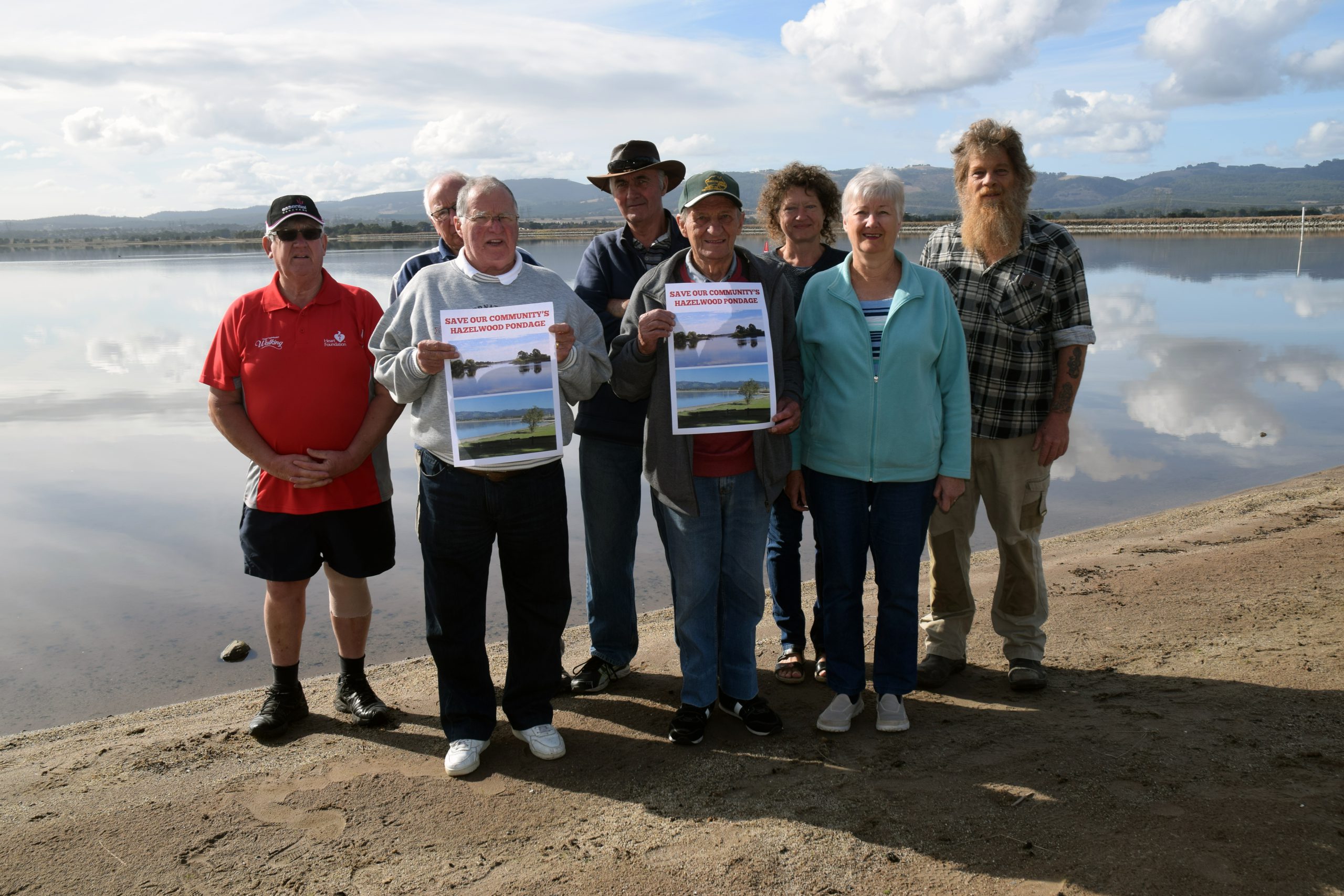
PHILIP HOPKINS
By PHILIP HOPKINS
GERMANY’S brown coal industry in the famous Rhineland region, which inspired Sir John Monash to build the State Electricity Commission using Latrobe Valley coal, still packs some punch, despite the drive towards more renewables. And the carbon dioxide being produced by the region’s modern brown coal power stations can be redirected into a number of industrial uses. The region – 2500 square kilometres bordered by Cologne, Aachen, Moenchen-Gladbach and Duesseldorf – is comparatively small in size compared with the two larger lignite regions in East Germany, but the Rhineland has more coal. Together, the regions still produce about 20 per cent of Germany’s energy. RWE, headquartered in the city of Essen in the Ruhr region, has been supplying electricity for 125 years, mainly from black and brown coal, but that is changing. By 2030, the company aims to have a capacity of 50 gigawatts of green energy through a decade-long investment of 50 billion euros in onshore wind, solar, hydropower, hydrogen, energy storage, biomass and natural gas. The company, according to a spokesman, Michael Fuengeling, has reduced its CO2 output by more than 60 per cent in eight years, from 2012 to 2020. “We are phasing out coal and other fossil fuels responsibly. Our goal is to be climate neutral by 2040,” he said. However, “these lignite-fuelled plants will remain indispensable for safe and dependable power generation for many years to come because they can operate around the clock irrespective of weather conditions or the time of day”. “This is particularly important at times when infeed from solar and wind power is low,” he said. RWE operates three major brown coal power stations and one small station that provides district heat. The three actual electricity providers are the Niederaussem (2800MW), Neurath (3100 MW) and Weisweiler (1500MW) plants. Over the decades, new individual units have been added while older units were shut; other units held in reserve have been brought back online since the Russian invasion of Ukraine, producing electricity to make up for the energy shortfall after Germany stopped buying Russian gas. “Mr Putin (Russia’s President), as far as he was concerned, picked an unfortunate time for his attack; the power was still available,” Mr Fuengeling said. Two 1100MW units at the Neurath power station, opened in 2012, “are among the world’s most advanced and most powerful lignite-fuelled power plants”, Mr Fuengeling said. Neurath, like Niederaussem, the first of its kind, uses High Efficiency, Low Emissions (HELE) technology. “They (the Neurath units) operate at a record 43 per cent degree of efficiency. This means they generate electricity from lignite with less heat loss than comparable power plants elsewhere,” Mr Fuengeling said. The Committee for Gippsland recommended in a major report five years ago to build a HELE plant in the Latrobe Valley, but this suggestion was not taken up by the Andrews state government. Mr Fuengeling said RWE developed four projects involving drying technology and “scrubbers” – CO2 sequestration – on the first new block unit at Niederaussem. The first involved a fluidised bed drying unit with internal waste heat utilisation. The second was high performance desulphurisation through two scrubbing units with higher efficiency, plus additional superfine dust removal on top of one already there. “In both cases, the scrubbing rates increased two-three percentage points up to 99 per cent. The fluidised bed, pre-drying unit increased the efficiency of that block unit by another five percentage points, 43 to 48 per cent, without co-generation,” he said. Mr Fuengeling said a CO2 scrubbing unit – a pilot unit using a cleansing solution containing a blend of amine started in 2009 and operating since – was capable of scrubbing rates of 90 per cent of CO2. Carbon dioxide is available in liquid form at the end of the process and can subsequently be transported, gasified and more. “We’re still using that one; the question is not whether CO2 scrubbing works – it does – the question now is, what to do with CO2 once sequestered and captured?” The answer: “It is used as a technical gas in a variety of industrial processes. It works beautifully.” Related to the CO2 scrubbing unit was the No 4 project. “A fourth was an algae farm. They fed algae a lot of carbon dioxide, then they harvested the algae and dried and processed it to make all kinds of products. It worked,” he said. “Algae paste can be used for a wide range of purposes – cosmetic products, pharmaceutical products. With proper treatment you can eat the stuff – vegetarian and vegan products. A ‘vege’ burger has a lot of algae in it!” Mr Fuengeling said the point was that CO2 “can be sequestered, scrubbed and used”. “They’re still going. It’s sad, a lot of money, time and ‘person power’ has been invested in these projects. They all work nicely but they won’t be used here in Germany, but elsewhere – in Thailand, for example. Even Qatar has used brown coal technology to burn imported black coal. They do not have to invest money in R and R; someone did it for them,” he said. “Germany wants to phase out coal electricity completely by 2030. I don’t think it’s feasible, but that’s the plan.” Mr Fuengeling said the problem was not just capacity. “You can build all the wind farms in the world but still need the transmission lines and you need storage facilities – for example, huge battery packs, none of which are available today. There will be many more electric cars in 10 years; you will need a great deal more electricity than we use today,” he said. To make hydrogen, “you need truckloads of electricity, which is meant to come from renewables”. That means more wind and solar farms, but as a plan becomes more concrete, those people who in theory are all in favour of renewables don’t want them on their doorstep – “the NIMBY phenomenon”. Mr Fuengeling said to put transmission lines underground was five times as expensive as above ground. The main areas of demand were in the south, but more wind was offshore in the north, which meant transmission lines had to go through the middle of Germany – “a big problem”. Less an issue for RWE has been the successful rehabilitation of dozens of brown coal mines over the years. In the early 19th century, lignite was mined for briquettes, but mines became progressively bigger, the bucket excavators bigger as bigger power plants were built. Since mining began, of the 310sq km of the region used for lignite, Mr Fuengeling said 230 sq km had been renovated, reclaimed and rehabilitated. In contrast to the Latrobe Valley, where the overburden ratio to coal is 1:4, in Germany, it is reversed – 4:1. This makes reclamation easier. Mr Fuengeling said the overburden was used to refill the holes. “They extract the coal and overburden almost simultaneously. The coal goes to the power plants and is consumed within a few days at most. However, in the Rhineland, all the overburden – in the Rhineland, there is on average three-four cubic metres of overburden for every cubic metre/tonne of coal extracted,” he said “All the overburden remains at the site of production, being dug up at the front and deposited in the rear. It takes half an hour for the overburden to go around the open-cast mine on a conveyor belt to be deposited. It makes it a lot easier.” Three types of reclamation dominate the RWE mines – farmland, forests and lakes. “The lakes are created by default; the rain fills them, and if, available water from nearby rivers, some of which are rerouted to fill lakes. As for the bigger contemporary mines – the lakes will be bigger and deeper, and will take decades to fill to completion,” he said. Mr Fuengeling said the rehabilitations had achieved huge success in regenerating biodiversity, which had been recognised by experts around the world. “In the recultivated areas, we find today more than 3000 species of animals and about 1500 plants and mushroom types. Every day there are more. A healthy and robust ecosystem is being generated,” he said. The continual expansion of the mines has created a human dimension that leaves the Latrobe Valley’s traumatic experience with the Yallourn township in the shade. In the Rhenish region, 60 villages and hamlets have been transferred, involving 40,000 people, since relocations began. The first took place in the 1920s on a small scale but took off after World War 2 and into the 1950s, 60s, 70s and 80s. The closure of the village of Luetzerath last year became a ’cause celebre’ for green and climate activists. Mr Fuengeling said the overall acceptance was higher in the past due to economic pressures. “People realised relocations were necessary to generate jobs and create wealth. They didn’t particularly like the idea of having to move; few do like it, particularly if they live in a house inherited from grandparents,” he said. “But they get a new house, with better modern amenities just few kilometres away. There is the physical process to get there and the time they have to invest, and of course there is a lot of heartache, which is perfectly understandable. Fifty-plus years ago, there was much greater grudging acceptance of these things.” Lignite has always been the cheapest source of energy in Germany, which has hardly any oil or gas and is dependent on energy imports. “Domestically, there is hard coal and soft coal (lignite), but only lignite is commercially viable, the only primary energy source that is cost competitive,” Mr Fuengeling said – without a carbon tax. Some in Germany maintain hydrogen and renewables may be advanced enough to ensure brown coal power stations close in 2030 under the government plan. The chairman of the industry trade union for mining, chemicals and energy, Michael Vassiliadis, doubts it. In an interview with the Frankfurter Allgemeine Zeitung earlier this year, Mr Vassiliadis said the coal exit was set for 2038, not 2030. “The federal government has made a plan how that should happen earlier,” he said. “But the five new wind towers a day, which are necessary for that, are not being built today, as I see it. With every day that passes, without the tempo increasing, the probability is becoming narrower that we’ll get out of coal. If we don’t have enough alternative power, it won’t happen. At the moment the fact is we need electricity from the coal power stations whether in the east or west.”









